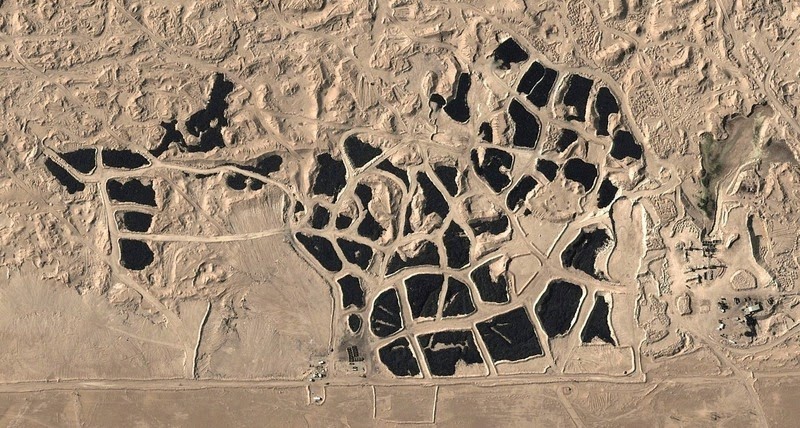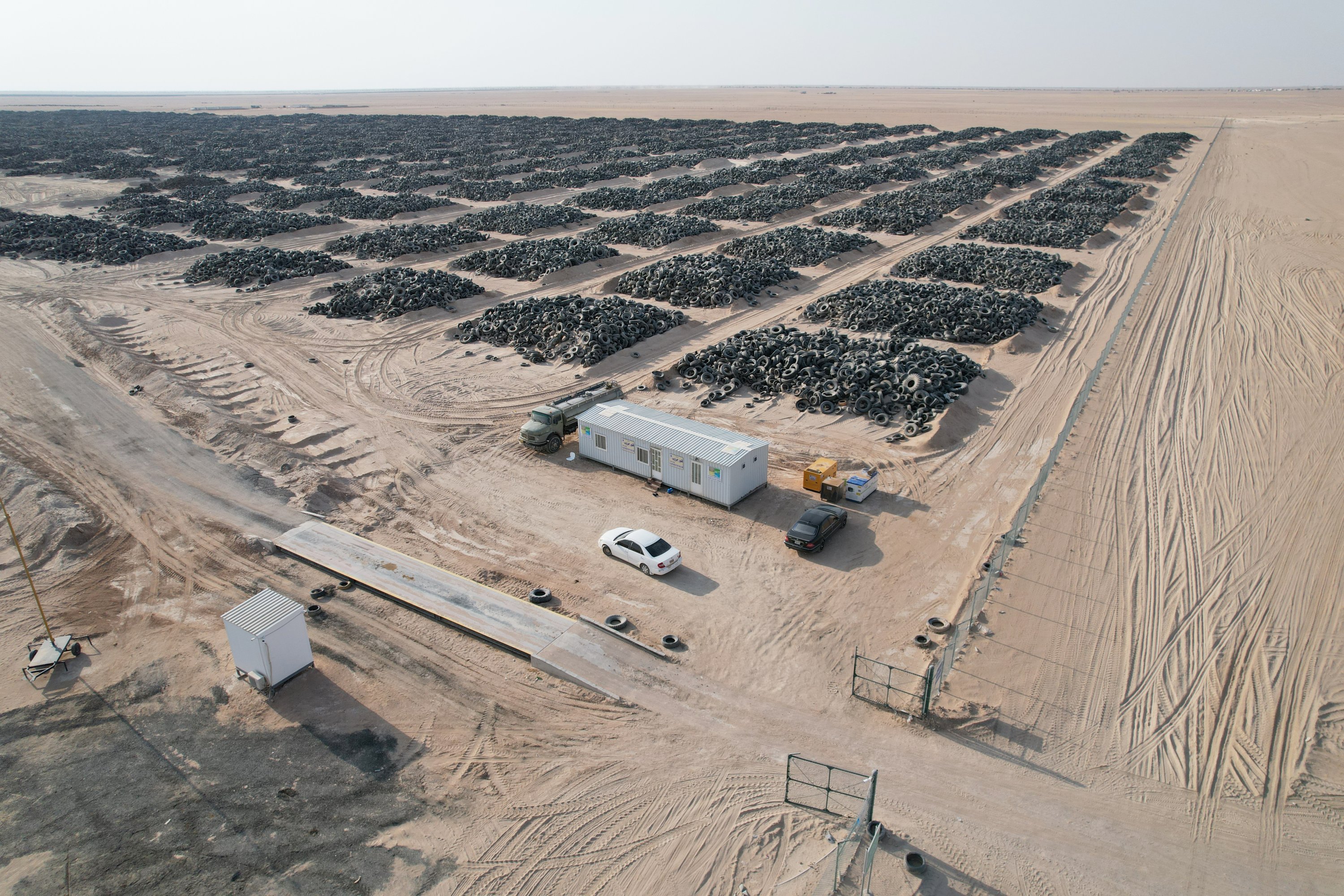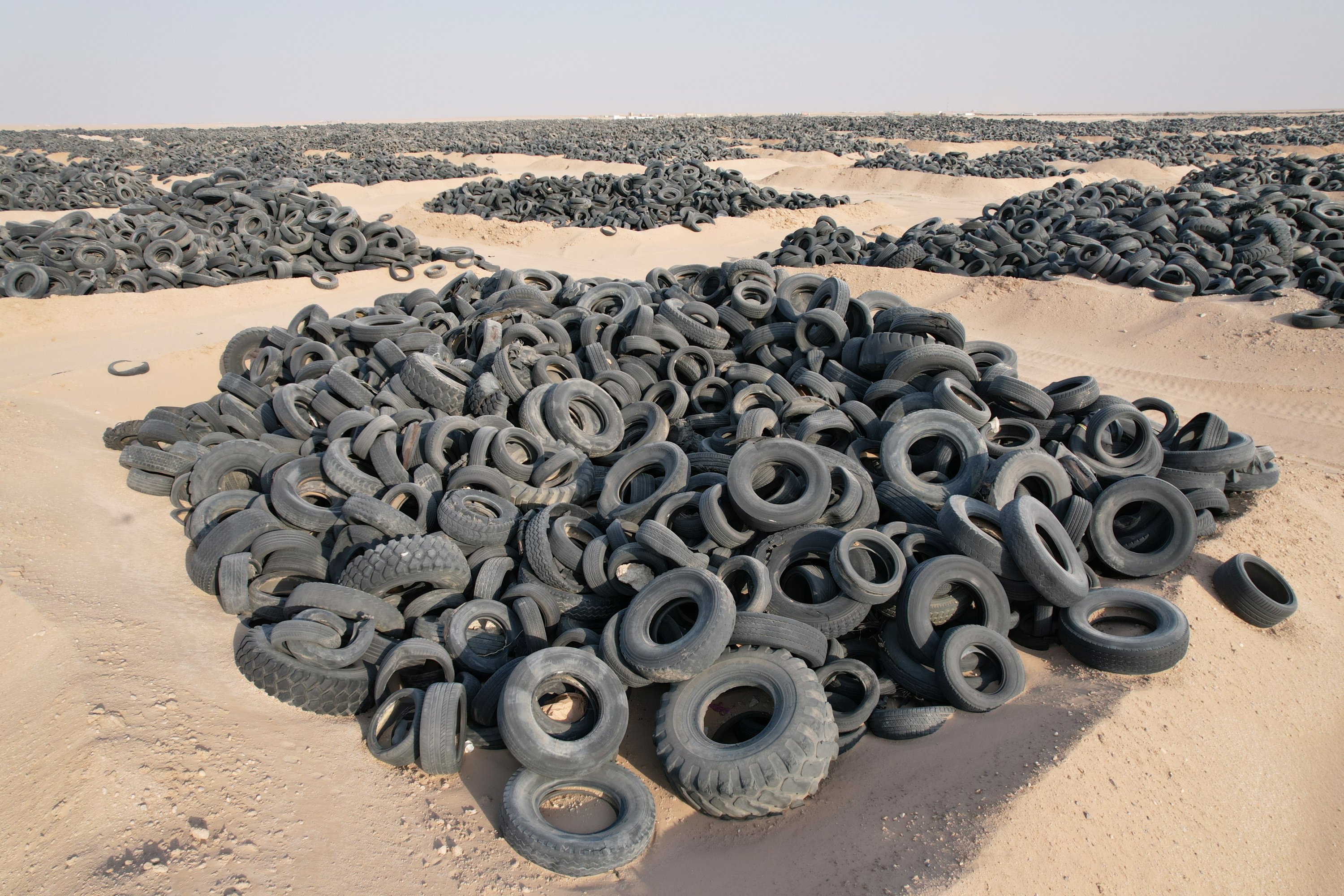Sat 14 August 2021:
Kuwait is struggling hard to scrap the world’s largest tyre graveyard, which scientists fear could create environmental and health hazards, Anadolu Agency reports.
Located in the Arhiya area, five kilometres (over three miles) south of the city of Jahra, the graveyard contained 50 million tyres, according to the previous statements by Kuwaiti activist Abdullah Al-Bunyan.
The dumped tyres, still to be disposed of, have been accumulated there over the past two decades.

Satellite image of the tire dump in Sulaibiya Kuwait.


Recently, a huge fire at one of the tyres landfills on Salmi Road south of the country was brought under control as firefighting teams worked hard to isolate the fire from the rest of the tyresand confined it to an area of 200 square meters.
The Arhiya tyres crisis was first recorded in April 2012 when a large fire broke out in the tyres landfills, attracting the world’s attention to the tire graveyard.
The April 2012 tyres fire was followed by another fire in November 2019 that took a long time to put out.
In October 2020, another tyres fire caused huge material loss.
The Kuwaiti government is taking various measures to curb the hazardous impacts of these dumped tires.
Last March, the General Administration of Customs approved a request for a company to export 5 million used tires at the Arhiya site within nine months.
It also initiated the establishment of five factories to cut, recycle and export these tires.
Previously, the director-general of the Kuwait Public Authority for Industry, Abdul Karim Taqi, announced that 48 million out of 57 million tires were cut in Arhiya.

Environmental Effects of the Tyre Graveyard
With such a huge amount of rubber in the area, fires have been known to break out at the site. Health effects from emissions of burning tyres include irritation of the skin, eyes, and mucous membranes, central nervous system depression, respiratory effects and cancer. The fumes created can have a huge impact on the environment itself. Emissions from the burning of tires include:
- Particulates,
- Carbon monoxide (CO),
- Sulfur oxides (SO ),
- Nitrous oxides (NO ),
- Hydrogen chloride,
- Benzene,
- Polychlorinated biphenyls (PCBs),
- Arsenic,
- Mercury,
- Extremely toxic chemicals like furans and dioxins
Other environmental issues can be from water collected in the tyres. This can act as a breeding ground for mosquitos.
Some countries are recycling old tyres by using them in the construction of roads. This not only helps eliminate the mounds of tyres in landfills but, it’s also thought that the rubber helps reduce road noise.
———————————————————————————————————————-
FOLLOW INDEPENDENT PRESS:
TWITTER (CLICK HERE)
https://twitter.com/IpIndependent
FACEBOOK (CLICK HERE)
https://web.facebook.com/ipindependent
Think your friends would be interested? Share this story!





